Explore fascinating museums in Cappadocia, where history comes to life amidst strange surroundings, revealing the region's historical treasures.
Unlike other cities and museums, most of the museums in Cappadocia are visited outdoors or in underground cave cities.
Get ready to experience a real open-air museum experience in a fairy tale in Cappadocia
1. Göreme Open-Air Museum
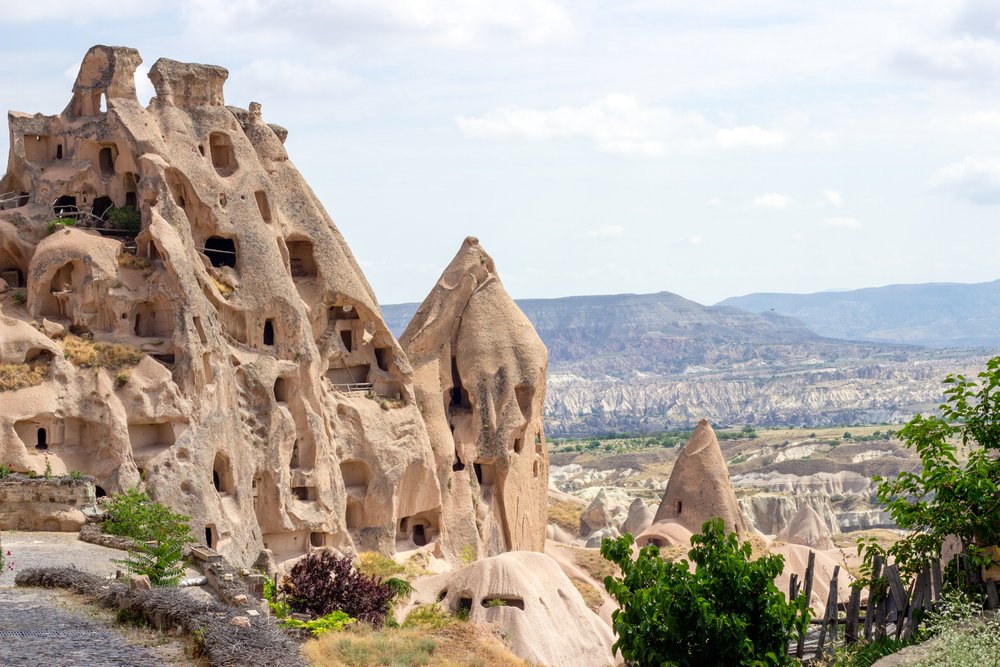
The Göreme Open Air Museum in Cappadocia, Turkey, is a UNESCO World Heritage Site and a popular tourist destination. It houses a collection of rock-cut churches and chapels dating back to the 10th and 11th centuries, carved into soft volcanic rock. The interiors of these churches are decorated with frescoes depicting Bible scenes—some of the best-preserved examples of Byzantine art in the world.
The museum was originally a monastic complex used for worship, prayer, school, and library. When the Mongols invaded Cappadocia in the 13th century, the monks fled, causing the complex to deteriorate. In the 19th century, the complex was rediscovered by European travellers, and the Turkish government began restoration work in the 1960s.
Visitors can explore the churches and chapels, admire the frescoes, and learn about the complex's history. There are various hiking trails available and a museum shop for souvenirs.
Most Popular Ticket:
2. Zelve Open-Air Museum

The Zelve Open Air Museum in Cappadocia presents the region's fundamental history and geological formations in a unique natural atmosphere. The museum is situated in the Zelve Valley, an extraordinary geological region characterised by erosion and volcanic processes that have produced extraordinary rock formations.
Cave houses and rock-cut chapels that date back to the 9th century and provide insight into the experiences of early Christian communities finding refuge in the region are open to visitors. In addition to representing the region's rich cultural tapestry, the museum illustrates the centuries-long coexistence of various civilizations and religions.
Efforts have been undertaken to conserve and restore the rock-cut structures over time, with the intention of guaranteeing their durability for future generations. Those with an appreciation for art, history, and the natural world will find the museum's voyage through time and profound understanding of the region's geological marvels, history, and culture unparalleled.
Most Popular Ticket:
3. Kaymakli Underground City
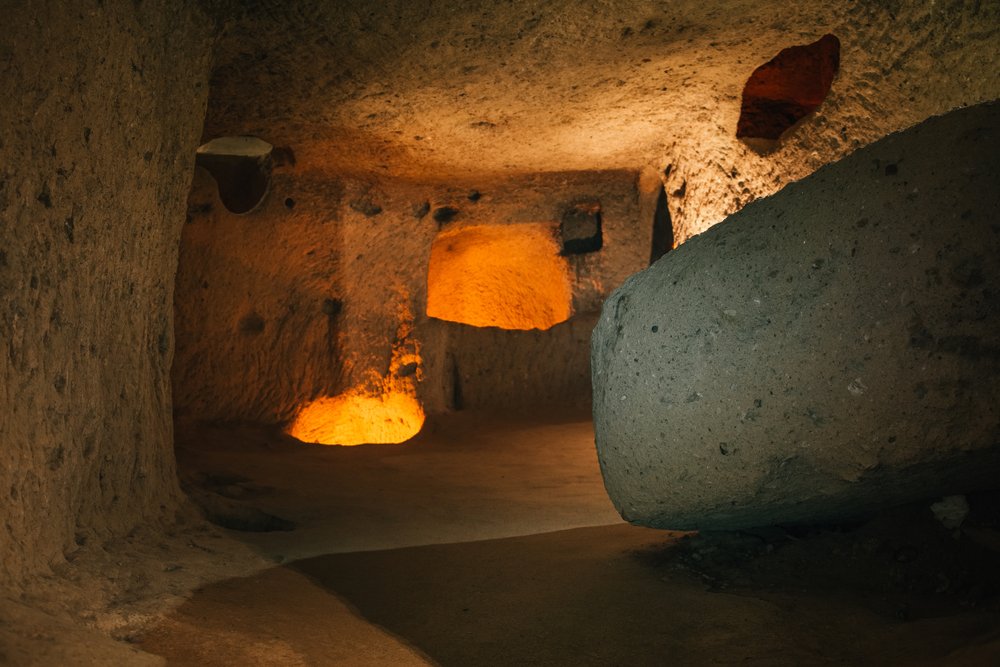
Kaymaklı Underground City, located in Cappadocia, Turkey, is a unique underground settlement dating back to the 8th–7th centuries BC. Carved into soft volcanic tuff rock, it has up to eight levels, reaching depths of up to 85 meters.
The Phrygians, an Indo-European people who inhabited the region during the Iron Age, are believed to have built the city, which is a testament to their ingenuity. The city is a complex network of tunnels, chambers, and rooms interconnected by stairs and shafts. It was designed to be self-sufficient and could accommodate up to 20,000 people, providing everything a community needed to survive.
The city was used as a refuge by locals for centuries, providing protection from invaders, raiders, and extreme weather conditions. The city's narrow tunnels and low-roofed rooms made it difficult for attackers to enter, and the ventilation system ensured a constant fresh air supply. Rediscovered in 1963 and opened to the public in 1985, Kaymaklı Underground City is now one of the most popular tourist attractions in Cappadocia.
The tour begins with a descent down a narrow staircase, where visitors must navigate the dimly lit tunnels and cool, damp air. The first level contains living quarters and storage rooms, while the second level contains kitchens and workshops, stables, and animal pens. The fourth level houses a well-preserved church and burial chambers.
Kaymaklı Underground City is a fascinating step back in time, a testament to the ingenuity and engineering skills of the Phrygians, and a reminder of the hardships faced by people throughout histor
Most Popular Ticket:
4. Derinkuyu Underground City
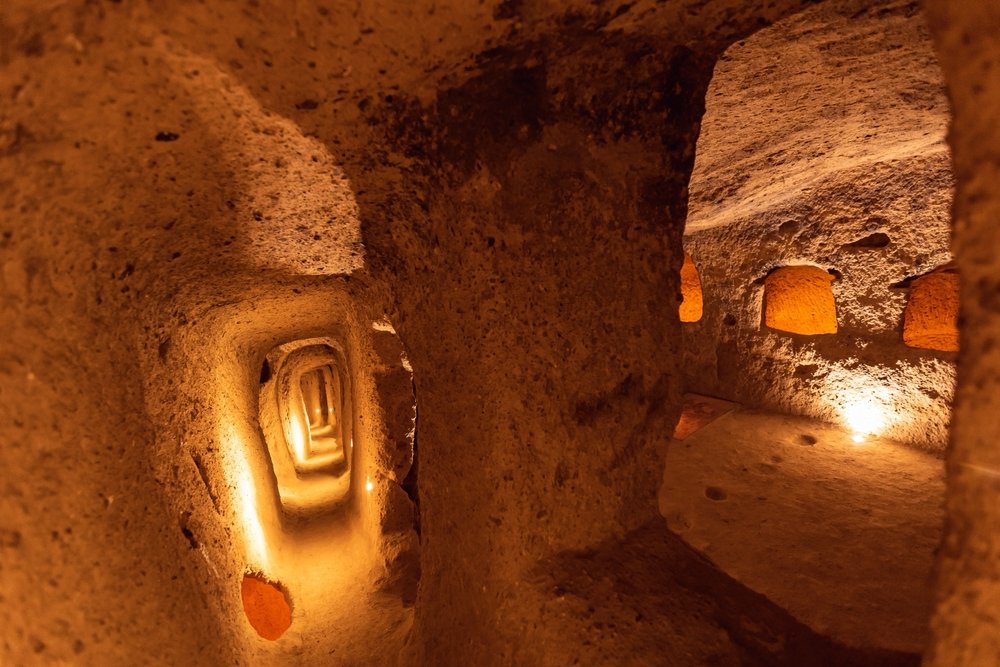
Derinkuyu Underground City, located in Cappadocia, Turkey, is one of the world's largest and deepest underground cities. It is a network of tunnels and chambers that extend over 18 levels and reach depths of up to 85 meters. The city was carved into the soft volcanic rock by early Christians and Byzantines over centuries, and it is believed to house up to 20,000 people, along with their livestock and food supplies. It has everything needed for a self-sufficient community, including kitchens, wells, stables, schools, and even a church.
The city was used as a place to hide from invaders, store food and supplies, and be a place of worship and education. It was abandoned in the 19th century but was rediscovered in the 1960s and opened to the public in 1969. Visitors can explore the city at their own pace, but it is important to stay on marked paths to avoid getting lost.
Some highlights of Derinkuyu Underground City include the Church, which is decorated with frescoes depicting Bible scenes; the Stables, which were well-ventilated and have troughs for feeding the animals; the Storage Rooms, which were cool and dry; and the Ventilation Shafts, which are up to 85 meters deep.
There are several mysteries surrounding Derinkuyu Underground City, such as its construction, purpose, and the use of modern tools and machinery.
5. Avanos Hair Museum

The Avanos Hair Museum, located in Avanos, Cappadocia, Turkey, is a one-of-a-kind museum notable for its collection of women's hair. The genesis of the museum may be traced back to the late 20th century, when local artist Chez Galip began collecting and displaying strands of hair from ladies who visited his pottery studio.
The museum now has hundreds of locks, each labelled with the name and location of the donor. Women from all around the world have donated their hair, making it a fascinating witness to the variety of its visitors.
The museum's unique concept distinguishes it from other museums in that it contains a portion of a woman's spirit and energy, and adding a lock of hair is said to bring good luck, success, and a safe return to the region. The museum draws visitors from all around the world by showing the unique ways traditions and superstitions materialise in modern settings.
6. Göreme Pottery Museum (Güray Museum)
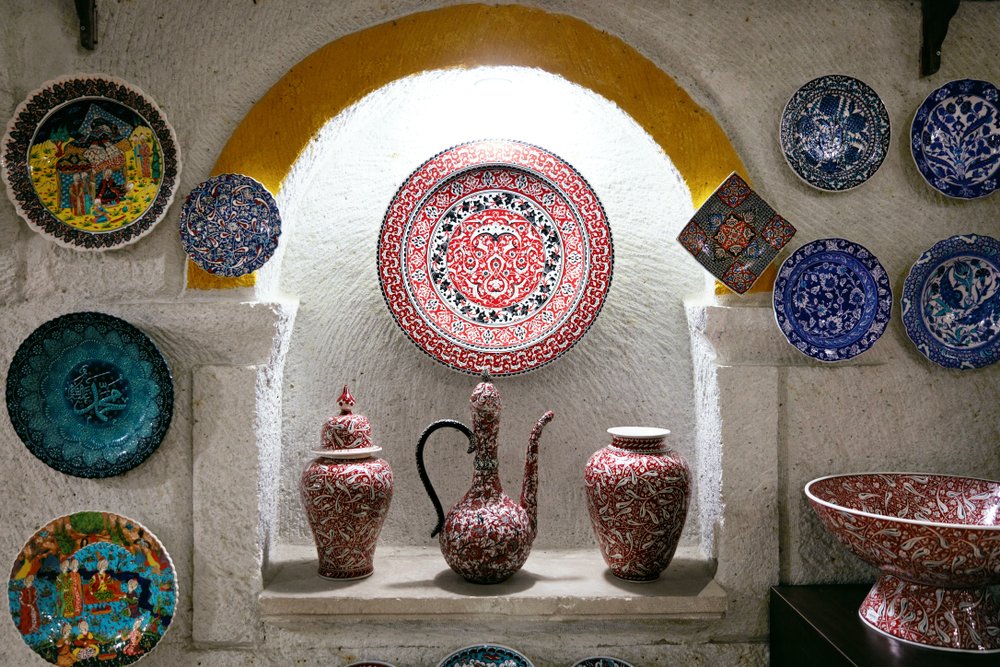
The Göreme Pottery Museum, also known as the Güray Museum, is a culturally significant attraction in Göreme, Turkey, showcasing the rich history and artistic traditions of the Cappadocian region. Established by the Güray family, the museum is dedicated to preserving and promoting the pottery-making traditions of the region.
The museum is famous for its rich historical heritage, including ancient pottery artifacts, live demonstrations of traditional pottery-making techniques, and distinctive Cappadocian designs inspired by the region's geological formations. The museum also offers an interactive experience, allowing visitors to try their hand at pottery-making under the guidance of skilled instructors.
If you are interested in taking a pottery class in Cappadocia, we recommend you book a tour. There are a many tours that include pottery classes. These tours, which are typically designed to have a full-day Cappadocia tour and pottery class from a qualified potter, also include transportation.
Most Popular Tour Tickets:
7. Cappadocia Doll Art & History Museum
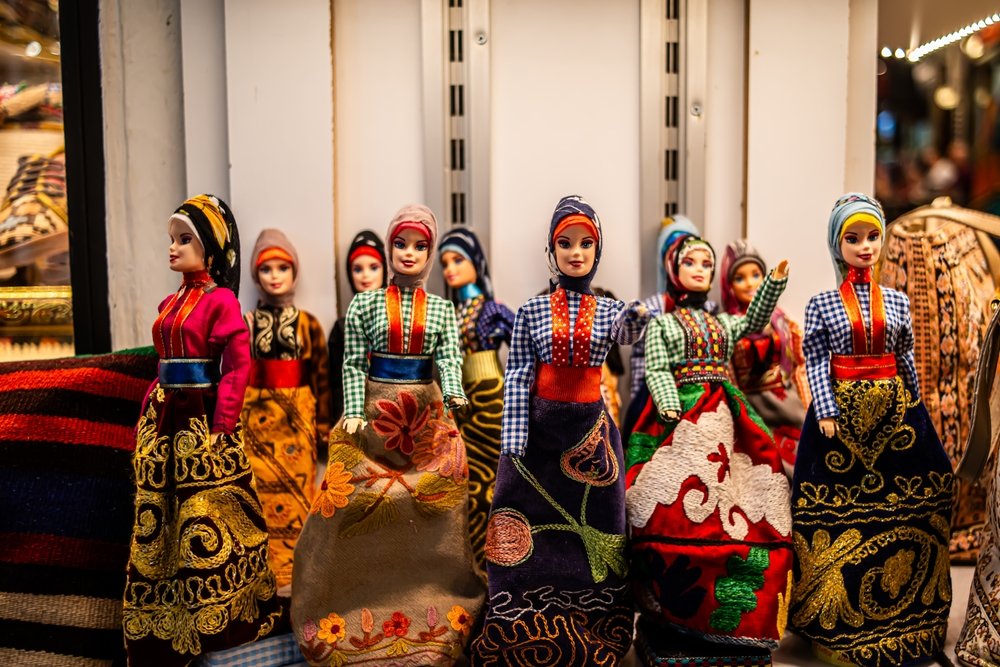
The Cappadocia Doll Art and History Museum, located in Mustafapaşa village, Turkey, is renowned for its collection of over 1,000 dolls in traditional Turkish dress, showcasing aspects of Turkish culture such as agriculture, crafts, and religion. The museum also houses a collection of traditional Turkish musical instruments, costumes, and household items.
In addition to dolls and artifacts, the museum offers exhibits on the region's geology, early inhabitants, and religious and cultural heritage. Visitors can learn weaving techniques in a traditional Turkish kitchen and loom.
The museum is a popular tourist destination, especially for school groups and educational groups. The museum's unique collection of dolls, interactive exhibits, and historic mansion make it a popular destination for those interested in Turkish culture and history.
8. Nevşehir Museum
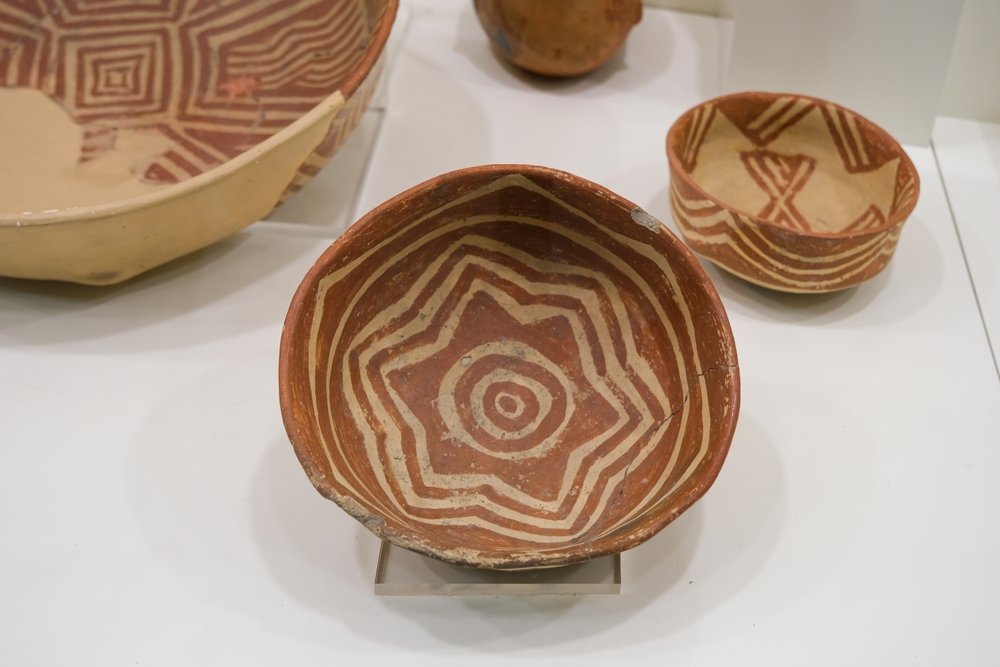
The Nevşehir Museum is an important place for history and culture in the city of Nevşehir in the province of Cappadocia. It has a large collection of archaeological artefacts, old treasures and showcases that show the history and culture of the Cappadocian area as a whole.
Hittite artefacts, such as figures, pottery, and other items from the Hittite culture, are what the museum is famous for. It also has artefacts from the Byzantine and Roman periods, such as sculptures, coins, building pieces, and more.
The museum is very important because it keeps and shows things that are important to the Cappadocian history as a whole. It lets people learn about historical artefacts that show how the region's culture has changed over time.
Historians, archaeologists, and anyone else who wants to learn about the past and culture of central Anatolia can use it to their advantage. The museum also brings in people who want to learn about the history of the Cappadocian area, which is good for local tourism.
9. Caravanserai Museums - Saruhan kültür ve kongre merkezi
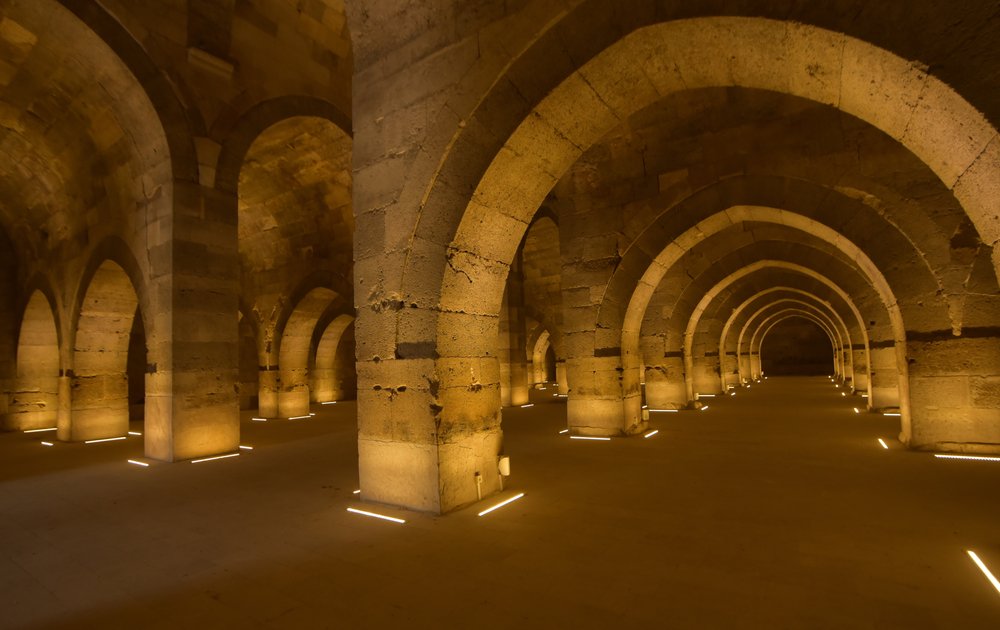
The Caravanserai Museums - Saruhan kültür ve kongre merkezi is a museum in Nevşehir, Cappadocia, Turkey, known for its unique exhibits on the history and culture of caravanserais.
The museum, housed in a 13th-century caravanserai, showcases information on caravanserais' history, architecture, and function, as well as their use by merchants and travelers for resting and trading goods. Visitors can also learn about the museum's interactive exhibits, including a replica of a caravanserai room and a scale model of a caravanserai.
The museum's Whirling Dervishes ceremony, performed daily by a group of dervishes, is a popular tourist attraction and a popular educational destination. The museum is famous for its well-curated and informative exhibits, making it a popular destination for those interested in Cappadocia's history and culture.
These factors make Caravanserai Museums - Saruhan kültür ve kongre merkezi famous:
- It is one of the only museums in the world dedicated to the history and culture of caravanserais.
- Every day, it features a unique Whirling Dervishes ceremony.
- The museum is in an old caravanserai that is more than 800 years old.
- The museum's exhibits are well-organized and full of useful information.
10. Haci Bektas Museum
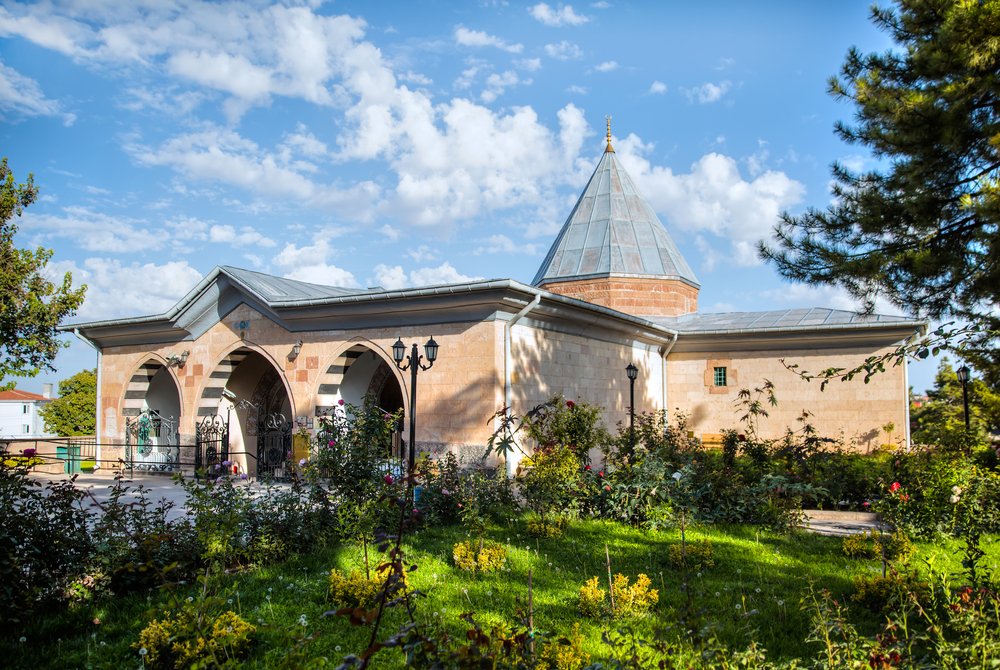
The Hacı Bektas Veli Museum acknowledges the important philosopher, mystic, and poet who formed the bektashi order, a major Sufi group. The museum and complex in Hacıbektaş, Nevşehir Province, Turkey, honours the heritage and teachings of Hacı Bektas Veli.
The Hacı Bektas Veli Museum in Hacıbektaş, located in the Nevşehir Province, is a significant historical and cultural site. It houses a mausoleum, mosque, library, and areas for spiritual gatherings and ceremonies, serving as a hub for the Bektashi Sufi tradition.
The museum houses artifacts, documents, and relics related to Hacı Bektas Veli's life and teachings, offering insight into his philosophy. It also functions as an educational center, providing information about his life and contributions. The museum attracts visitors from diverse backgrounds, including Bektaşi followers and those interested in spirituality and history. The museum hosts various cultural events and gatherings that celebrate his teachings and traditions, often featuring music, discussions, and communal activities.
The museum serves as a site of spiritual significance, cultural education, and a destination for exploring the rich heritage of the Bektashi order and Sufi traditions in Turkey.
For current information on new attractions or exhibitions associated with Hacı Bektaş in Cappadocia, check travel guides, official websites, or local sources.

